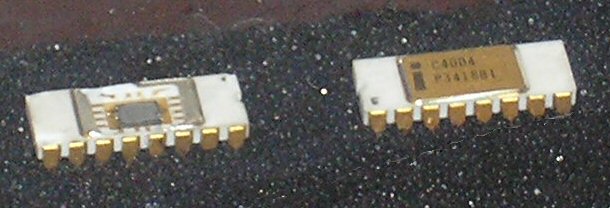Here you can see the USB logic analyzer pod on the left, and the under side of the calculator on the right. The printer is visible in the upper right corner.
This printer can print in either black (blue-ish, anyway) or red. I previously linked to a web page by Arne Rossius with his analysis of the similar M-31A printer, but of course it gave no hints as to how the shift to red worked. By recording the signals received from the position sensor and the signals driving the motor and solenoid, I've been able to get a better idea how this printer works.
Although I found the pinout to be the same as described in the M-31A, I disagree with Arne's description of the function of the position sensor signals.
| Pin | Function |
|---|---|
| 1 | Solenoid - |
| 2 | Solenoid + |
| 3 | Motor + |
| 4 | Motor - |
| 5 | Solenoid index |
| 6 | Rotation index |
| 7 | Sensor common |
| 8 | Character index |
In the P170-DH, pins 2 (Solenoid +) and 3 (Motor +) are connected to the unregulated positive supply, which seems to provide a bit under 8 VDC. Pin 7 (Sensor common) is connected to ground, while pins 5, 6, and 8 are pulled to a logic "high" through resistors and debounced with an RC network. When a sensor contact connects with the conductive pattern etched on the sensor disc it pulls the logic input low.
Here's where my analysis differs: When pin 8 goes low, the printer wheels are approaching the next character. If pin 6 is also low it's the first character in the sequence given below, else it's the next one in the sequence. If this character is to be printed the solenoid is activated when pin 5 next goes low and remains activated until pin 5 goes low again.
Why not just use pin 5 to determine the character position? It appears from the signal recordings that while the character is being printed the wheels stop moving briefly. During this time pin 5 often generates several erratic low indications, while pin 8 never does. I suspect the contact for pin 5 is just on the edge of the conductor pattern on the sensor disc and any movement of the disc causes the contact to make and break. This would result in printing errors.
It also appears that this printer can print from the "Symbols" wheel in the right-most two columns, rather than only one. I haven't seen this calculator do it yet, but the second character printed thus far has always been index 10, which is a space. There's definitely enough of a gap between the right most symbol and the first number for one if not two more characters.
| Wheel | Character Printed | |||||||||||||
|---|---|---|---|---|---|---|---|---|---|---|---|---|---|---|
| Symbols | + | × | ÷ | ◊ | ∗ | Δ | G | M | C | = | (space) | − | % | (red) |
| Numbers | 0 | 1 | 2 | 3 | 4 | 5 | 6 | 7 | 8 | 9 | − | , | • | # |
The third character appears to be the key to the color shift. If the number portion is to be printed in black, the third character is index 10 (a space). But if the number is to be printed in red, the third character is index 13; this also prints as a space, but all following characters are printed using the red number wheel.
Printing of a line is completed by activating the solenoid for much longer than a single character time while printing the final character. In my tests the P170-DH asserted the solenoid for just under 24ms.
At some point I'll want to disconnect this printer from the calculator board so I can test it with a PIC as a driver. The reason I haven't done so yet is I'm not sure I've learned all I can before I start disassembling it. I do have a second P170-DH, but I'd rather not have to open that one up unless I need to.

